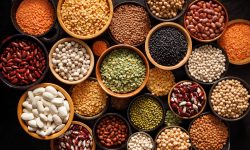Donating 10,000 meals in Pulses! For #WorldPulsesDay Spud is donating 10,000 meals worth with pulses…
Simply put, radishes do not get enough credit.
They are sidelined as a garnish, carved into rosettes or sliced over a salad for extra texture. They languish on the veggie platter after the sexier vegetables have picked off, waiting to be unceremoniously smothered in ranch dip and eaten out of desperation. But if that is how you think about radishes, you are seriously missing out.
Radishes, like their trendier cousins kale and cauliflower, are members of the brassica family. Brassicas (also commonly called cruciferous vegetables) tend to be among the healthiest vegetables, high in fiber, antioxidants, and vitamins. These spicy roots are no exception. Check out this list for a more comprehensive round-up of the health properties of radishes, but here are some highlights:
Radishes have anti-congestive properties, meaning they can help decrease congestion throughout the respiratory system caused by asthma, allergies, or colds.
 Eating them has been shown to stimulate bile production, which keeps your gallbladder and liver running smoothly. Radishes also act as a powerful detoxifier, helping eliminate toxins and waste from the blood.
Eating them has been shown to stimulate bile production, which keeps your gallbladder and liver running smoothly. Radishes also act as a powerful detoxifier, helping eliminate toxins and waste from the blood.
As a natural diuretic, radishes can help cleanse and reduce inflammation in the kidneys and urinary system. This can help reduce your risk of UTIs. If you have a UTI, drinking radish juice can help ease the burning sensation and even shorten the duration of the infection.
Radishes have anti-pruritic properties, meaning they can help reduce itching. Radish juice applied to bug bites and bee stings can help reduce pain, inflammation, and can soothe the affected area.
They also have antibacterial and antifungal properties, so applied topically, the juice can help clear up rashes and other skin disorders.
One serving of radishes has around 25% of your recommended daily value of vitamin C, which is essential for the growth and repair of bodily tissues, the production of serotonin in your brain, and helping your body absorb iron, among many other functions. Vitamin C is not stored in your body, so you need to consume it every day.
Radishes are high in fiber, which aids in promoting regularity and a healthy body weight. Adding fiber to your diet also reduces the risk diabetes, heart disease, and colon cancer.
Radishes are naturally cooling and have a high water content which can help reduce fevers and keep you cool. In eastern medicine, they are often used for their cooling properties.
If all this has inspired you to chow down on some radishes, don’t wait! They are in season now, so it is the perfect time to stock up on some locally grown beauties.
Instead of just crunching on some raw radishes (not there’s anything wrong with that!) try spreading them with butter and salt, or dunking them in some olive oil.
Make sure you don’t waste any part of the plant by using the greens to make a delicious garlicky pesto.
For a more interesting take on a salad, you can’t beat a fattoush.
If you want a warmer option, braising is a delicious choice – Try this recipe.
You’ll never underestimate the radish again!
Disclaimer: This content is for informational purposes only and is not to be perceived as providing medical advice, diagnosis or treatment. The information provided should complement, not replace, the advice and relationship of your healthcare provider.




